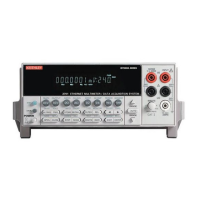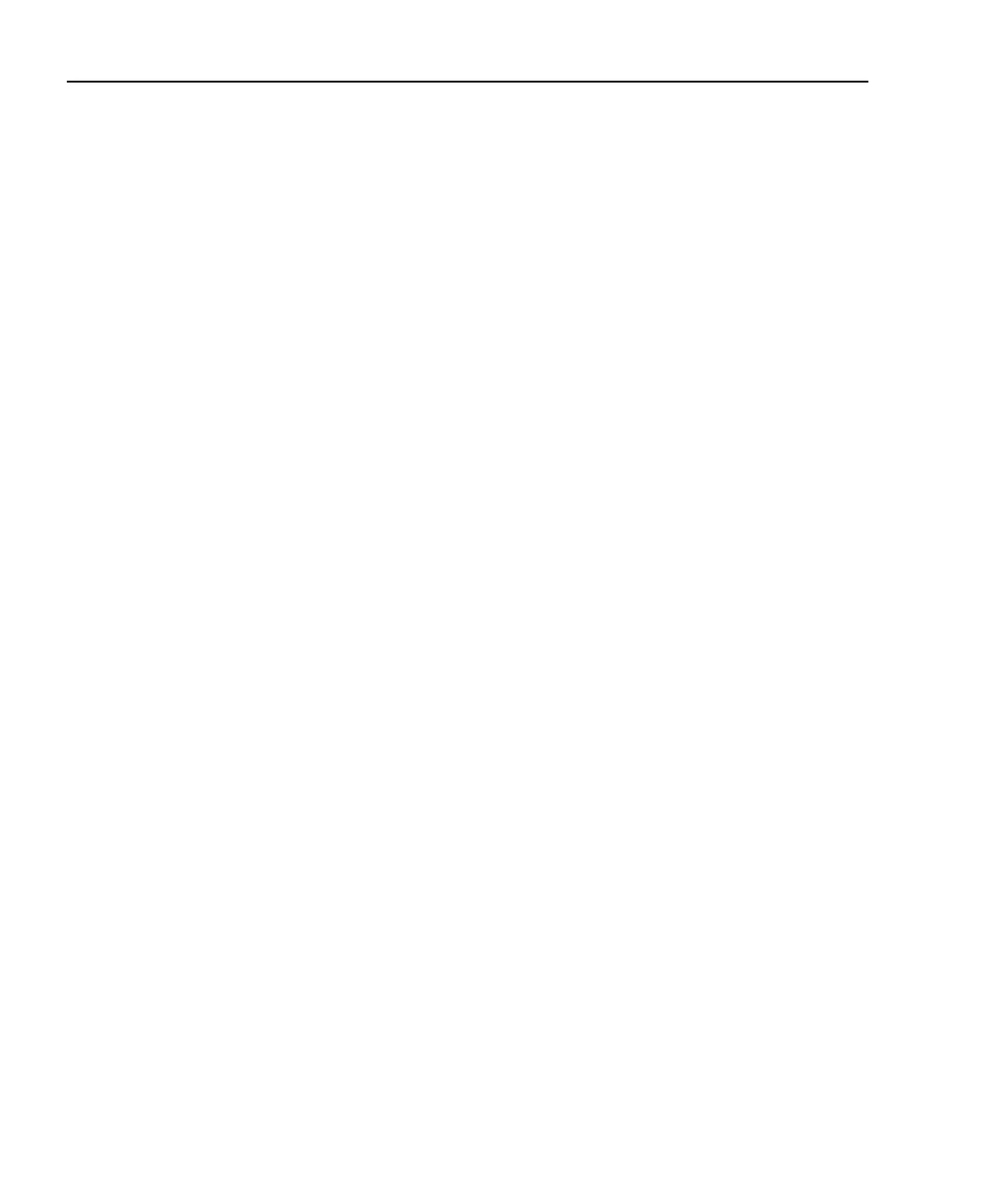4-14 Range, Digits, Rate, Bandwidth, and Filter Model 2701 User’s Manual
Filter
The digital filter is used to stabilize noisy measurements. The displayed, stored, or
transmitted reading is a windowed-average of a number of reading conversions (from 1 to
100).
The filter setup is “remembered” and can be unique for each measurement function (DCV,
ACV, DCI, ACI, Ω2, Ω4, and TEMP). When you select a function, the instrument will
return to the last filter setup for that function.
NOTE The various instrument operations, including Filter, are performed on the input
signal in a sequential manner. See “Signal processing sequence,” page D-2, for
details. It includes flowcharts showing where in the processing sequence that
filtering is performed.
Filter characteristics
In general, the digital filter places a specified number of A/D conversions (“Filter count”)
into a memory stack. These A/D conversions must occur consecutively within a selected
reading window (Filter Window). The readings in the stack are then averaged to yield a
single filtered reading. The stack can be filled in two ways (Filter Type): moving or repeat-
ing. Details on digital filter characteristics are provided as follows:
Filter type
There are two digital filter types: moving and repeating. The moving average filter uses a
first-in first-out stack, where the newest reading conversion replaces the oldest. An average
of the stacked reading conversions yield a filtered reading. After the specified number of
reading conversions (“Filter count”) fill the stack, the moving filter gives a new reading for
every new conversion. This process is depicted in Figure 4-2A.
The repeating filter takes a specified number of conversions, averages them, and yields a
filtered reading. It then flushes its stack and starts over. This character is useful when scan-
ning (readings for other channels are not averaged with the present channel). The stack is
then cleared and the process starts over (see Figure 4-2B).
NOTE The moving filter cannot be used when scanning. If a scan channel is set up to
use the moving filter, the filter will not turn on. Scanning is covered in Section 7.
Filter count
The filter count specifies how many consecutive A/D conversions (within the filter
window) to place in the memory stack. When the stack is full, the A/D conversions are
averaged to calculate the final filtered reading. The filter count can be set from 1 to 100.
Note that with a filter count of 1, no averaging is done. However, only readings within the
“Filter window” will be displayed, stored, or transmitted.

